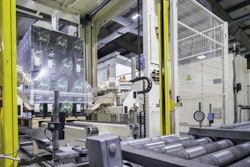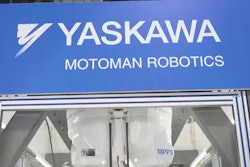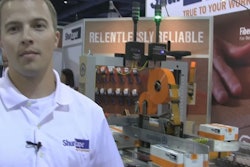1. Determine the optimum force needed. Primary packaging is being drastically lightweighted to control costs and meet sustainability initiatives. This affects the ability of stretch-wrapping equipment to contain and unitize loads without crushing or damaging goods. Consider equipment that incorporates technology that ensures the use of the optimal containment on
each load.
2. Understand how the equipment will impact freight and labor costs. In markets where competition means seeking advantage everywhere, companies need to control freight and labor costs. Some semi-automatic stretch wrappers enable operators to stay on fork trucks while wrapping their loads, saving time and labor while reducing safety risks. Cut transportation costs dramatically by simply weighing each load to ensure quality and gauge freight. Integrated scales allow operators to wrap and weigh loads simultaneously.
3. Know the speed at which you want the equipment to run. High-speed equipment isn’t as expensive, comparatively, as you might think. Buy flexibility to accommodate future needs.
4. Consider greater integration. Pallet wrappers tend to be standalone pieces in a warehouse. Some suppliers are incorporating robotics technology into the wrapping process to move pallets to the pallet wrapper and ensure that the palletizers can communicate with automated guided vehicles (AGVs). Control systems need to be worked out if adopting a more sophisticated approach.
5. Always ensure safety. Make certain that stretch-wrapping equipment is safe; it can hurt personnel if not properly guarded or curtained.
6. Allocate budgets for beefier frames and more robust machinery. Ensure that conveying systems associated with the stretch wrapper are as robust as possible. If someone hits a 3,000-lb machine with a fork truck, the fork truck is going to win. Don’t forget the human factor; fork-truck drivers are rarely Mario Andrettis, or the gentlest people in a factory. Machines need to withstand the abuse personnel will subject them to, wittingly or unwittingly.
7. Weigh the imperative to automate. Hand wrapping is the biggest culprit for using too much film. If you’re wrapping by hand, you can easily compare stretch-film costs by performing a simple cut-and-weigh test on a typical load. Take a hand-wrapped load, cut off the film, and weigh it. Then compare that number to the amount of film applied by a machine. If you’re using too much film, it’s simple to calculate the payback time period on the machine based on the film savings alone.
Liked this article? Download the entire playbook here.
























